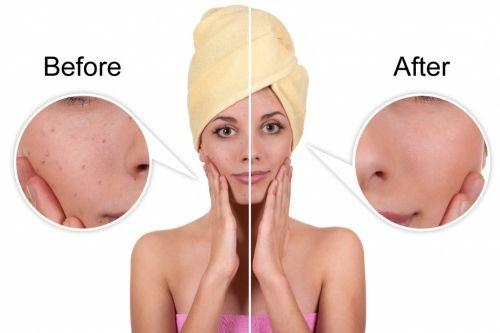Here we will discuss the formation of acne, which has a significant impact on its treatment. There are generally believed to be four main factors that contribute to its formation.
- Excessive sebum production. Some people inherit more active oil glands, making their pores more prone to clogging with oil, resulting in problems such as blackheads, whiteheads, and even acne (inflammatory acne). Certain medications, such as oral/topical steroids, can also stimulate oil gland activity and increase the likelihood of acne. Androgens are primarily male hormones, but they are also produced in females. Androgens can stimulate the sebaceous glands, and when they are overly active, the glands produce excess oil, which can lead to clogged hair follicles and an increased risk of acne. Often, acne patients have normal androgen levels, but their sebaceous glands may be sensitive to androgens, leading to excessive oil production and acne.
- Follicular hyperkeratosis. This is caused by abnormal keratinization of follicular cells. When abnormal keratinized skin blocks the follicle opening, it can cause blockage and prevent oil secretion, accelerating the formation of acne.
- Overgrowth of Propionibacterium acnes. P. acnes is a Gram-positive anaerobic rod that is part of the skin’s normal bacterial flora and typically inhabits hair follicles and sebaceous glands. P. acnes thrives in environments that contain more fatty acids and other components, which aids in its reproduction. When keratin plugs form in hair follicles, P. acnes can grow rapidly and break down saturated fatty acids, producing large amounts of free fatty acids that penetrate the skin through pores. This causes the skin to react, leading to the formation of blackheads, redness, and swelling. Bacteria in hair follicles also produce harmful compounds and secrete enzymes that stimulate nearby connective tissue to become inflamed, resulting in redness and swelling.
- Inflammation. When P. acnes, other bacteria, and immune cells in the body change, inflammation can occur, leading to the formation of pus-filled lesions.
Sometimes, acne problems suddenly worsen, and the causes can be hormonal changes, weather changes, excessive stress, lack of sleep, dietary imbalances, and even switching to different cosmetics. These factors can cause changes in the skin and exacerbate acne problems. It is essential to identify the underlying causes and address them accordingly to effectively control the condition.

